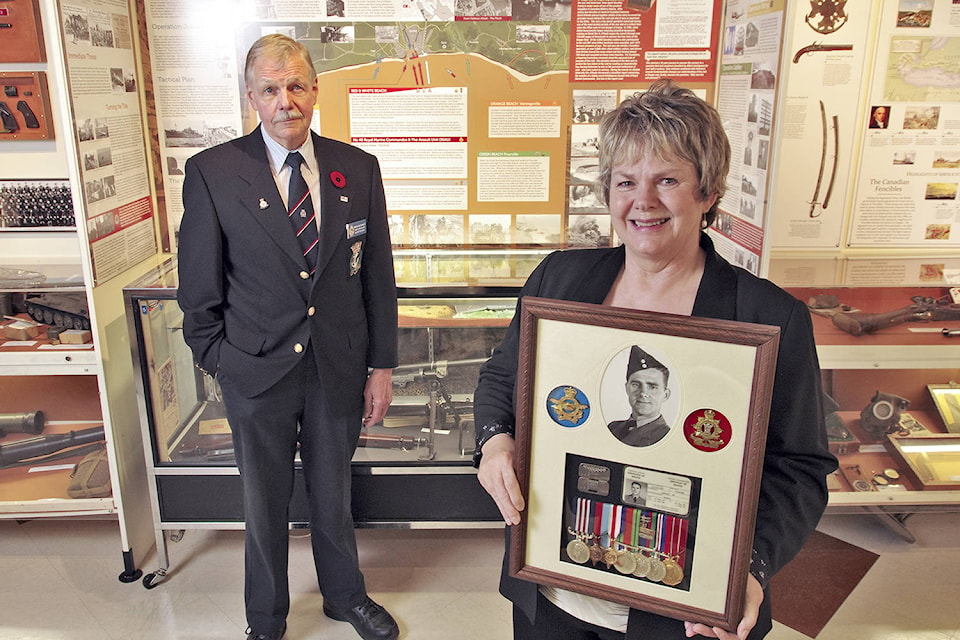The raid on the French port village of Dieppe in August 1942 cost hundreds of Canadians their lives, is considered one of the worst defeats for the Allies of the Second World War and among the most controversial actions of Canada’s military history.
The true reasons behind Dieppe remained an enigma, so to speak, to Hitler’s military and, for more than 50 years, to historians until documents were declassified in the mid 1990s.
A new exhibit created by the Vancouver Island Military Museum displays uncloaked truths behind the amphibious assault, based on research by Canadian author and historian David O’Keefe, who sifted through 150,000 pages of declassified documents to discover Operation Jubilee was a massive diversionary tactic staged to allow a Royal Marines commando team to slip into the port and steal Germany’s latest-model Enigma communications encryption machine, hopefully without German intelligence realizing one went missing in the destruction the battle left in its wake.
“The reason they chose Dieppe for the raid was because it had a German naval headquarters where Enigma machines would be,” said Brian McFadden, Vancouver Island Military Museum vice-president. “It had armed trawlers in the inner harbour, which were all equipped with Enigma machines, so they decided we will have a raid on Dieppe.”
The plan went sideways when the commando unit tasked to land at Dieppe’s harbour entrance encountered and were attacked by a German naval patrol. With the element of surprise lost, German defenders were prepared and prevented the Canadians from taking out the harbour defences and supporting the Royal Marines objective.
“From what I can see it is by far the most extensive examination of Dieppe yet to appear,” O’Keefe said of his work, in correspondence with the News Bulletin. “Due mostly to good timing (releases of information) and new technologies (digital camera, the internet, etc.,) that allow the historian to go deeper than ever before with breadth and scope never imagined. We are definitely on the cusp of a revolution in historical investigation, interpretation and understanding.”
According to Veterans Affairs Canada, of 4,963 Canadians who took part in the operation, just 2,210 returned to England – many of those were wounded – and 916 Canadians died.
- EDITORIAL: Find a way to remember
- REMEMBRANCE DAY: Keeping an eye on the coast
The idea for the V.I. Military Museum’s exhibit came up when Tracy Duggan of Nanaimo brought her father’s military service medals, including the Dieppe Bar, into the museum.
“It was very serendipitous,” said Duggan, who went to buy a plaque on the museum’s Veterans Wall of Honour for her father Walter Duggan who was at Dieppe.
“He was just an infantryman, so he was on one of the landing vessels that actually went on shore and they actually had to try and storm the beach,” Duggan said.
Walter Duggan was at Blue Beach, the landing point which saw the highest number of casualties, and was cited for his bravery under heavy fire that involved two attempts to get a mortar into action against the German defenders and carrying a wounded comrade to safety.
Prior to O’Keefe’s work, many of the survivors of Dieppe died without ever knowing why they were sent into that mission or why nearly 1,000 of their friends died there.
“Why we did our exhibit was to tell the families of all those people who fought and died there, there was a reason for the guys going there,” McFadden said. “Unfortunately they’ve laboured under the misapprehension all these years that their lives were just thrown away, that there was not a real purpose for the raid. Well, there was.”
- RELATED: Remembrance Day will be observed around city
- RELATED: Nanaimo students get lessons in remembrance
photos@nanaimobulletin.com
Like us on Facebook and follow us on Twitter
